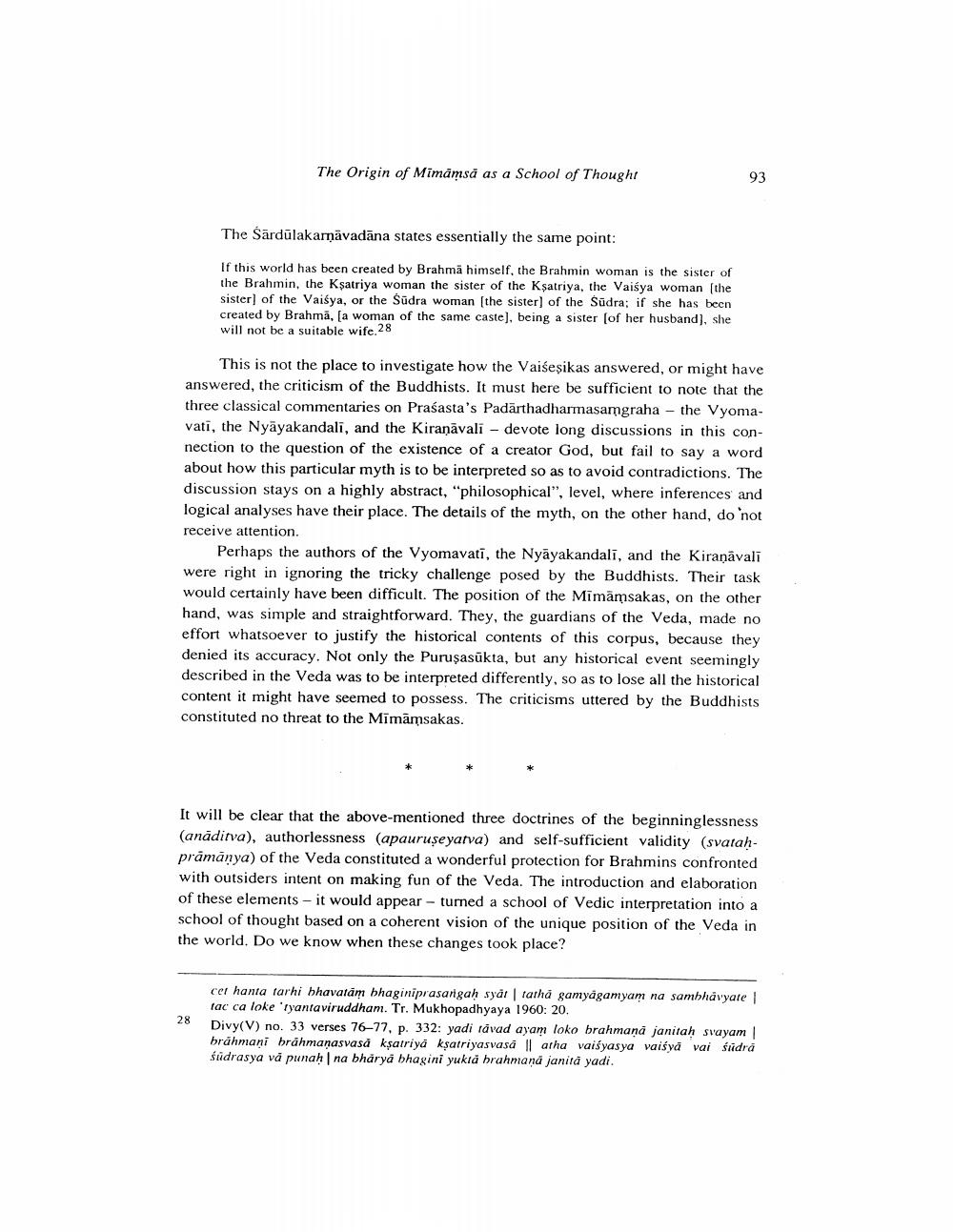________________
The Origin of Mimāmsă as a School of Thought
The Särdülakamāvadāna states essentially the same point:
If this world has been created by Brahmä himself, the Brahmin woman is the sister of the Brahmin, the Ksatriya woman the sister of the Ksatriya, the Vaisya woman (the sister of the Vaiśya, or the Šūdra woman [the sister) of the Sūdra; if she has been created by Brahma, [a woman of the same caste), being a sister (of her husband), she will not be a suitable wife.28
This is not the place to investigate how the Vaišeşikas answered, or might have answered, the criticism of the Buddhists. It must here be sufficient to note that the three classical commentaries on Praśasta's Padārthadharmasamgraha - the Vyomavati, the Nyāyakandali, and the Kiraņāvali - devote long discussions in this connection to the question of the existence of a creator God, but fail to say a word about how this particular myth is to be interpreted so as to avoid contradictions. The discussion stays on a highly abstract, philosophical", level, where inferences and logical analyses have their place. The details of the myth, on the other hand, do not receive attention.
Perhaps the authors of the Vyomavati, the Nyāyakandali, and the Kiranavali were right in ignoring the tricky challenge posed by the Buddhists. Their task would certainly have been difficult. The position of the Mimämsakas, on the other hand, was simple and straightforward. They, the guardians of the Veda, made no effort whatsoever to justify the historical contents of this corpus, because they denied its accuracy. Not only the Purusasūkta, but any historical event seemingly described in the Veda was to be interpreted differently, so as to lose all the historical content it might have seemed to possess. The criticisms uttered by the Buddhists constituted no threat to the Mimāmsakas.
It will be clear that the above-mentioned three doctrines of the beginninglessness (anāditva), authorlessness (apauruşeyatva) and self-sufficient validity (svatahpramanya) of the Veda constituted a wonderful protection for Brahmins confronted with outsiders intent on making fun of the Veda. The introduction and elaboration of these elements - it would appear - turned a school of Vedic interpretation into a school of thought based on a coherent vision of the unique position of the Veda in the world. Do we know when these changes took place?
28
cel hanta tarhi bhavatam bhaginiprasangah syat tathả gamydgamyam na sambhavyate | fac ca loke 'ryantaviruddham. Tr. Mukhopadhyaya 1960: 20. Divy(V) no. 33 verses 76–77, p. 332: yadi tavad ayam loko brahmana janitah svayam brahmani brāhmaṇasvaså ksatriya ksatriyasvasa || atha vaisyasya vaiśyā vai sūdra śüdrasya vă punah na bharya bhagini yukta brahmana janita yadi.




